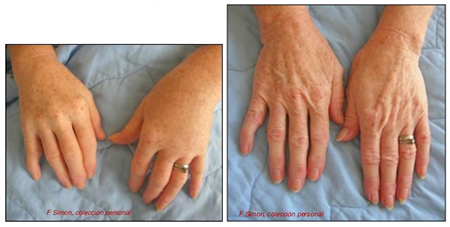Pause in use of live-attenuated chikungunya vaccine in older adults due to safety concerns
Drug regulatory agencies have recommended a pause in the use of the live-attenuated chikungunya vaccine (known commercially as Ixchiq®) in older adults, due to reports of serious adverse events during post-marketing use of the vaccine.
The US Food and Drug Administration (FDA) has recommended a pause in the use of the live-attenuated vaccine in people aged ≥60 years while it investigates the issue and conducts an updated assessment of the benefits and risks in people in this age group.[46] The Centers for Disease Control and Prevention (CDC) supports this recommendation.[45]
The European Medicines Agency (EMA) has also suspended use of the vaccine in older adults, but with a higher age cut-off of ≥65 years. Use of the vaccine is now contraindicated in adults aged ≥65 years in affected regions. The EMA has introduced this temporary measure while it conducts a thorough safety review of the vaccine, and determines whether any changes are required to the terms of its marketing authorisation.[47]
The recommendations come after reports of serious adverse events occurring in older people who have received the vaccine. As of 7 May 2025, 17 serious adverse events, including two deaths, have been reported globally in people aged between 62 and 89 years. The fatal cases were due to encephalitis and aspiration pneumonia. Many of the people experiencing serious adverse events had pre-existing comorbidities, and it is unknown whether there is a causal relationship with the vaccine as yet.[46][47]
The live-attenuated vaccine may still be used in people <60 years of age (in the US) and <65 years of age (in Europe) within its license. The vaccine is contraindicated in people who are immunocompromised.
The live-attenuated vaccine was the first vaccine to be approved for the prevention of disease caused by chikungunya virus. Over 80,000 doses have been used worldwide since its approval. More recently, an adjuvanted recombinant virus-like particle vaccine (known commercially as Vimkunya®) was approved for the prevention of disease caused by chikungunya virus; this vaccine is not currently affected by the restrictions and may be used in people aged ≥60 years.
Approximately 18.7 million cases of chikungunya virus infection have been reported across 110 countries between 2011 and 2020, with most of the burden in the Latin American and Caribbean region.
Summary
Definition
History and exam
Key diagnostic factors
- presence of risk factors
- history of mosquito bites
- fever
- arthralgias/arthritis
- rash and other dermatological manifestations
Other diagnostic factors
- comorbid illness
- back pain
- neuropathic-type pain
- headache
- lymphadenopathy
- ocular manifestations
- photophobia
- sore throat
- gastrointestinal manifestations
- neurological manifestations
- haemorrhagic manifestations
Risk factors
- Aedes mosquito bites
- travel to/residence in endemic area
- outdoor exposure
- environmental factors favouring breeding of mosquitoes
- neonate with infected mother
- low educational level
- age >40 years
- male sex
- blood transfusion
- blood group O positive
- comorbid illnesses (risk of more severe disease)
- neonate (risk of more severe disease)
Diagnostic investigations
1st investigations to order
- FBC with differential
- LFTs
- erythrocyte sedimentation rate
- CRP
- basic metabolic panel
- serology
- molecular testing
Investigations to consider
- musculoskeletal imaging
- MRI brain
- cerebrospinal fluid analysis
- electromyogram
- nerve conduction studies
- electroencephalogram
- placental histology
Treatment algorithm
Contributors
Authors
Miguel G. Madariaga, MD, MSc, FACP

Infectious Diseases Consultant
Naples Community Hospital
Naples
FL
Disclosures
MGM declares that he has no competing interests.
Peer reviewers
Jessica Fairley, MD
Assistant Professor of Medicine
Division of Infectious Diseases
Emory University
Atlanta
GA
Disclosures
JF declares that she has no competing interests.
Mala Chhabra, MBBS, MD
Joint Director
National Centre for Disease Control
Delhi
India
Disclosures
MC declares that she has no competing interests.
References
Key articles
Centers for Disease Control and Prevention. Clinical testing and diagnosis for chikungunya virus disease. May 2024 [internet publication].Full text
Brito CAA, Marques CDL, Falcão MB, et al. Update on the treatment of musculoskeletal manifestations in chikungunya fever: a guideline. Rev Soc Bras Med Trop. 2020;53:e20190517.Full text Abstract
Burt FJ, Rolph MS, Rulli NE, et al. Chikungunya: a re-emerging virus. Lancet. 2012 Feb 18;379(9816):662-71. Abstract
World Health Organization; Pan American Health Organization. Tool for the diagnosis and care of patients with suspected arboviral diseases. 2017 [internet publication].Full text
World Health Organization. Guidelines on clinical management of Chikungunya fever. Dec 2019 [internet publication].Full text
Reference articles
A full list of sources referenced in this topic is available here.
Use of this content is subject to our disclaimer
